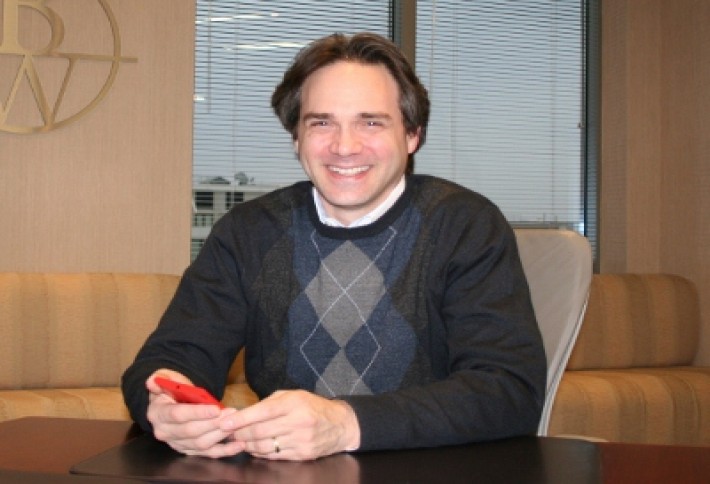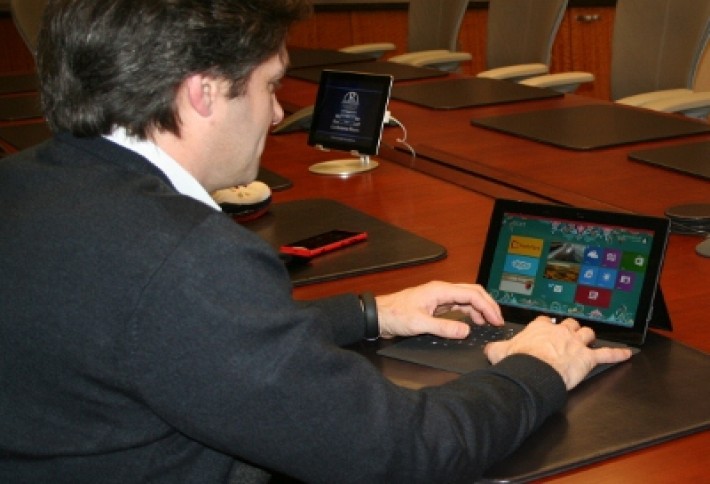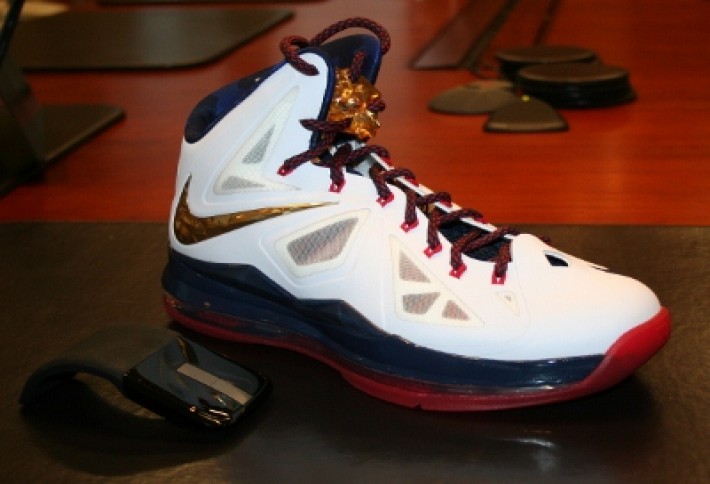Nike, Microsoft, and Nokia Love Design

And Banner & Witcoff loves to obtain design patents for Nike, Microsoft, and Nokia. This is the national IP firm's tenth year obtaining more US design patents than anyone other US firm. With 660 last year, it acquired more than the next three firms combined. Rob Katz, a former USPTO patent examiner and patent holder himself (a "Method and Apparatus for Dilating Blood Vessels"), has over his years with the firm contributed to more than 4,700 design patents in the US. He uses them, too: above, we snapped him with his smartphone, the Nokia Lumia. The firm did design patents both for the shape of the phone and the screen design patent for its system, running on Microsoft.
Numbers of screen design patents (patenting the icons or graphic user interface on the screen of a cell phone or tablet, or even a bank's ATM reader or a washing machine) are increasing fast. The USPTO used to have one patent examiner on the task, which recently increased to three, and now nine, out of around 100. With clients including Microsoft and Electrolux, Banner & Witcoff sees a lot of them. One driver is many functions are moving "under the glass," as folks can see when they find themselves using a smartphone as a computer, camera, recorder, flashlight, oh, and phone, all in one. So instead of 30 different hardware patents, you might have just one for the phone. Above, Rob's Microsoft Surface tablet (screen design patent and all). He's also rocking Nike's exercise band.
By 2017, screen design patents may equal those not on screen. But not everything is behind glass quite yet. (And hopefully shoes don't become obsolete anytime soon.)Aside from getting more screen-savvy, patents are also moving internationally with more ease. A new legislation enacted in December lets companies file just one patent app with WIPO (World Intellectual Property Office), and with a few clicks add countries where you'd like it to apply. It'll be about a year before we see how different applicants use it.



